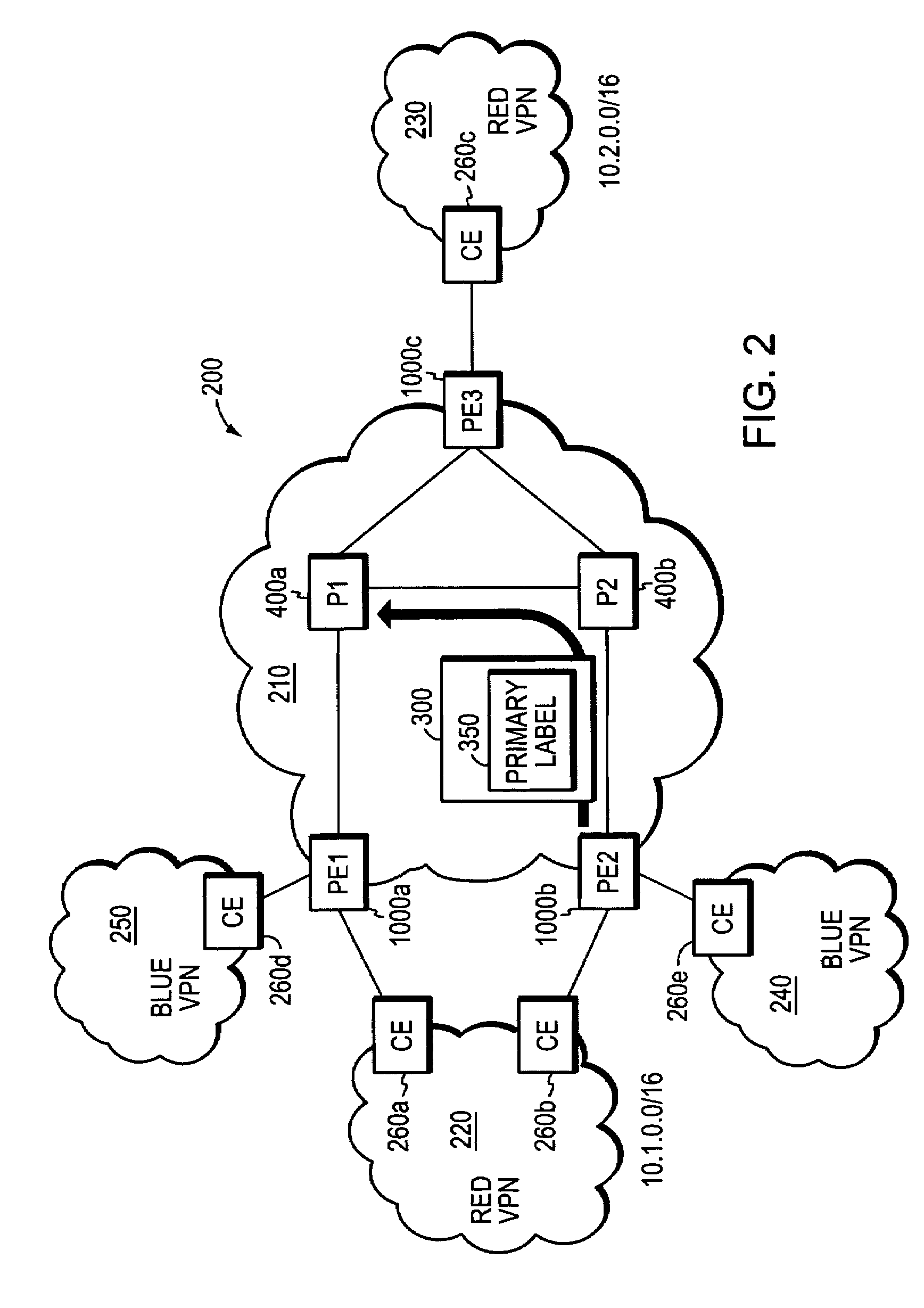System and method for PE-node protection
a technology of system and method, applied in the field of routing data, can solve the problems of edge device failure or otherwise inaccessible, and achieve the effect of quick and efficient rerouting
- Summary
- Abstract
- Description
- Claims
- Application Information
AI Technical Summary
Benefits of technology
Problems solved by technology
Method used
Image
Examples
Embodiment Construction
[0045]In accordance with an illustrative embodiment, a computer network includes first and second provider edge (PE) devices that function as “FRR mates,” such that network traffic originally destined for one FRR mate may be quickly rerouted to the other without having to wait for conventional network convergence. When a PE device receives rerouted packets originally destined for its FRR mate, the PE device responds by forwarding only those rerouted packets matching selected traffic types; rerouted packets that do not match the selected traffic types are dropped or otherwise discarded. The selected traffic types may include, among other things, network traffic formatted according to selected network-level or application-level protocols, or data flows destined for selected subnetworks and / or VPNS. The first and second PE devices may be statically configured as FRR mates, e.g., by a network administrator, or they may be configured to automatically detect their compatibility as FRR mat...
PUM
 Login to View More
Login to View More Abstract
Description
Claims
Application Information
 Login to View More
Login to View More - R&D
- Intellectual Property
- Life Sciences
- Materials
- Tech Scout
- Unparalleled Data Quality
- Higher Quality Content
- 60% Fewer Hallucinations
Browse by: Latest US Patents, China's latest patents, Technical Efficacy Thesaurus, Application Domain, Technology Topic, Popular Technical Reports.
© 2025 PatSnap. All rights reserved.Legal|Privacy policy|Modern Slavery Act Transparency Statement|Sitemap|About US| Contact US: help@patsnap.com



